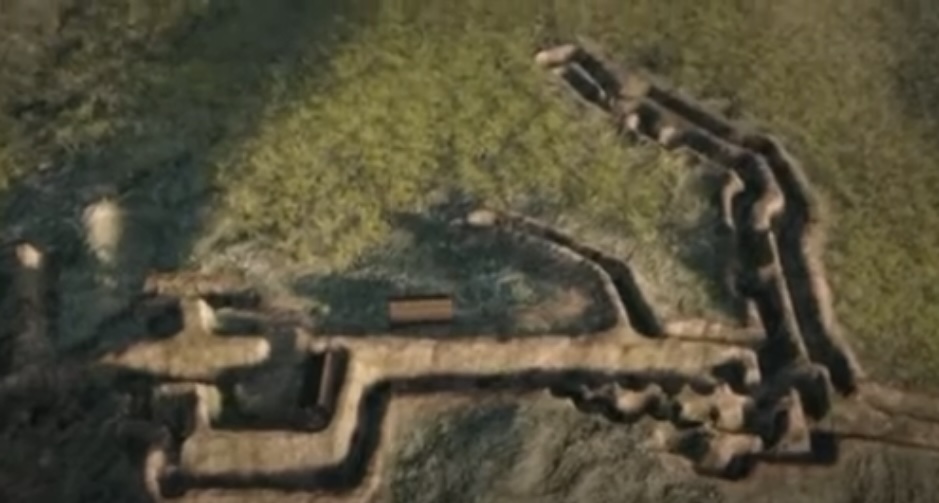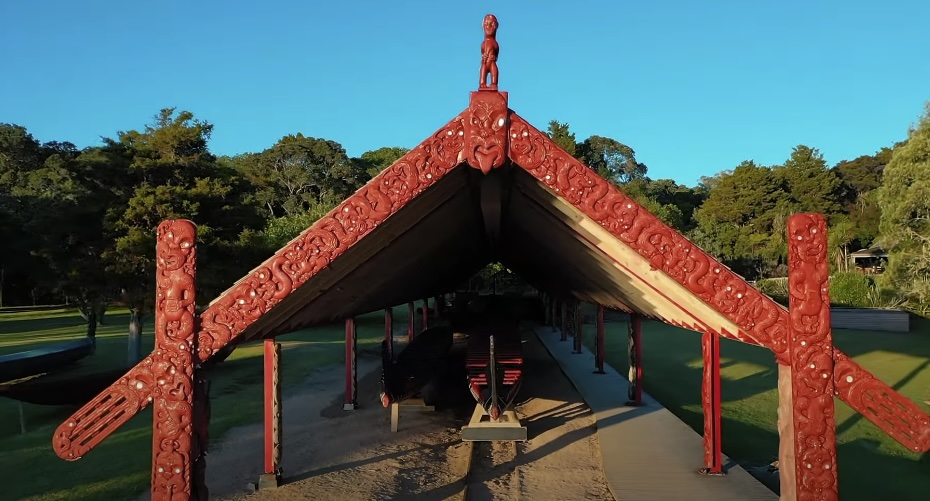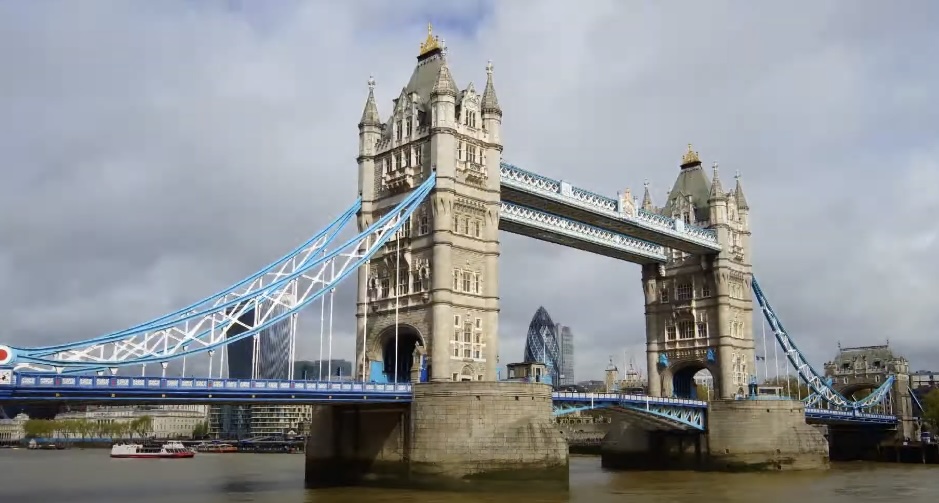New Zealand, a country renowned for its stunning natural landscapes, also boasts a rich tapestry of historical sites that tell the story of its unique cultural heritage and historical events. From North to South, these sites offer a glimpse into the lives of indigenous Māori tribes, early European settlers, and the events that shaped the nation. Here, we dive into some of the most significant New Zealand historical sites, providing insights and answering common questions about these fascinating locations.
Top 10 New Zealand Historical Sites
Exploring the country’s historical sites offers a journey through time, from the signing of significant treaties to the remnants of gold rushes and the echoes of colonial architecture. Here are the top 10 historical sites that encapsulate New Zealand’s diverse heritage:
| Historical Site | Location | Significance |
| Waitangi Treaty Grounds | Bay of Islands, Northland | This is the site where the Treaty of Waitangi was signed in 1840, marking the beginning of British sovereignty in New Zealand. The grounds feature a museum, a carved meeting house, and the historic Treaty House. |
| Te Papa Tongarewa | Wellington | Te Papa, or ‘Our Place’, is New Zealand’s national museum. It showcases extensive collections that reflect the country’s cultural and natural history, including significant Māori artifacts. |
| Kerikeri Mission Station | Kerikeri, Northland | Established in 1819, this is New Zealand’s oldest surviving European building. It includes the Stone Store and Kemp House, offering a peek into early missionary life in New Zealand. |
| Old Government Buildings | Wellington | One of the largest wooden buildings in the world, these were the seat of New Zealand’s government during the late 19th century. |
| Napier’s Art Deco | Napier, Hawke’s Bay | After a devastating earthquake in 1931, Napier was rebuilt in the Art Deco style. Today, it stands as one of the purest Art Deco cities in the world. |
| Rangiriri Battle Site | Waikato | This site marks a pivotal point in the New Zealand Wars, where the 1863 battle between British forces and Māori Kingitanga movement defenders took place. |
| Larnach Castle | Dunedin, Otago | New Zealand’s only castle, built in 1871 by merchant baron and politician, William Larnach. It offers a look into Victorian lifestyle and architecture. |
| Arrowtown Chinese Settlement | Arrowtown, Otago | This area preserves the remnants of a settlement where Chinese gold miners lived during the Otago Gold Rush of the 1860s. |
| Waitomo Caves | King Country | These caves are known for their stunning limestone formations and glowworm displays, but they are also significant for their historical use by Māori tribes. |
| Pompallier Mission | Russell, Bay of Islands | This site is home to New Zealand’s oldest industrial building, where French Catholic missionaries produced printed Māori language texts in the 1840s. |
Historical Significance of These Sites
Understanding the historical significance of these sites provides insight into the cultural, political, and social evolution of the country. Let’s delve into the significance of some key historical sites:
Waitangi Treaty Grounds
The Waitangi Treaty Grounds hold immense historical significance as the site where the Treaty of Waitangi was signed on February 6, 1840, between the British Crown and various Māori chiefs. This treaty is considered the founding document of New Zealand, marking the beginning of British governance in the country. The significance of the Waitangi Treaty Grounds lies in:
- Founding Document: The Treaty of Waitangi is a foundational document in New Zealand’s history, establishing the relationship between the British Crown and Māori iwi (tribes).
- Cultural Understanding: It represents an attempt to reconcile the interests of Māori and European settlers, although its interpretation and implementation have been subject to debate and contention.
- Symbol of Nationhood: Waitangi Day, commemorated annually on February 6th, is a public holiday that reflects on the significance of the treaty and its implications for contemporary New Zealand society.
Napier Art Deco Buildings
Napier’s Art Deco buildings are renowned worldwide for their architectural significance and historical charm. Following the devastating Hawke’s Bay earthquake of 1931, which razed much of Napier’s central business district, the city was rebuilt in the fashionable Art Deco style prevalent during the era. The historical significance of Napier’s Art Deco buildings lies in:
- Architectural Heritage: The buildings are a testament to the resilience and innovation of the community in the aftermath of a natural disaster, showcasing the Art Deco architectural style popular in the early 20th century.
- Tourist Attraction: Napier’s Art Deco architecture attracts tourists from around the globe, contributing significantly to the local economy through heritage tourism.
- Cultural Identity: The preservation and celebration of these buildings serve to reinforce Napier’s cultural identity and heritage, fostering a sense of pride and connection among residents.
Parihaka
Parihaka holds a special place in New Zealand’s history as a symbol of peaceful resistance and Māori activism. Located in the Taranaki region, Parihaka was the site of a non-violent Māori resistance movement in the late 19th century, led by prophets Te Whiti o Rongomai and Tohu Kākahi. The historical significance of Parihaka lies in:
- Peaceful Protest: The inhabitants of Parihaka practiced passive resistance in response to land confiscations and encroachments by European settlers and government forces, embodying principles of non-violent resistance and protest.
- Cultural Revitalization: The legacy of Parihaka continues to inspire Māori activism and cultural revitalization movements, emphasizing the importance of land rights, sovereignty, and cultural autonomy.
- National Reconciliation: The government’s acknowledgment of past injustices at Parihaka and efforts towards reconciliation underscore the site’s significance in the ongoing process of healing and reconciliation between Māori and the Crown.
Cultural Impact
The cultural impact of New Zealand’s key historical sites transcends mere tourism, deeply resonating with Māori communities and reflecting narratives of cooperation, conflict, and reconciliation. Let’s explore the profound cultural significance of these sites:
Waitangi Treaty Grounds
The Waitangi Treaty Grounds hold immense cultural significance for Māori communities and all New Zealanders alike. Here’s how this site impacts culture:
- Sacred Grounds: For Māori, Waitangi is not just a historical site but a sacred space where the spirit of the Treaty of Waitangi lives on. It serves as a focal point for cultural gatherings, ceremonies, and expressions of identity.
- Cultural Heritage: The Waitangi Treaty Grounds are a repository of Māori cultural heritage, showcasing traditional practices, protocols, and art forms that are central to Māori identity and spirituality.
- Cultural Understanding: Visiting Waitangi fosters a deeper understanding of Māori culture, values, and perspectives, promoting cultural exchange and reconciliation between Māori and non-Māori communities.
Rangiriri Battle Site
The Rangiriri Battle Site holds significant cultural importance as a site of historical conflict and resilience. Its cultural impact is evident in the following ways:
- Historical Memory: For Māori, the Rangiriri Battle Site commemorates the sacrifices and struggles of their ancestors during the New Zealand Wars. It serves as a reminder of the resilience and determination of Māori communities in the face of adversity.
- Cultural Identity: The battle site is integral to Māori identity and collective memory, reinforcing the importance of land, sovereignty, and cultural autonomy in Māori culture.
- Reconciliation: The Rangiriri Battle Site also symbolizes efforts towards reconciliation and healing between Māori and the Crown, as both parties acknowledge and commemorate the events that transpired there.
Parihaka
Parihaka is a symbol of peaceful resistance and cultural revival, holding significant cultural resonance for Māori communities. Its cultural impact is profound in the following ways:
- Non-violent Resistance: Parihaka embodies the principles of passive resistance and non-violent protest, demonstrating the power of peaceful resistance in preserving culture and asserting rights.
- Cultural Revitalization: The legacy of Parihaka inspires Māori communities to reclaim their cultural heritage, language, and traditions, fostering a sense of pride and cultural continuity.
- Spiritual Connection: Parihaka remains a spiritual and cultural center for Māori, serving as a place of pilgrimage, reflection, and connection to ancestral lands and traditions.
Preservation Efforts

Through concerted efforts by governments and communities, these landmarks are maintained and protected as invaluable educational resources. Let’s delve into the preservation efforts for key New Zealand sites:
Waitangi Treaty Grounds
The preservation of the Waitangi Treaty Grounds involves a multifaceted approach to safeguard its cultural and historical significance:
- Government Funding: The New Zealand government allocates resources to maintain and enhance the infrastructure and facilities at Waitangi, ensuring visitors have access to informative exhibits, guided tours, and cultural performances.
- Cultural Guardianship: Māori iwi (tribes) play a central role in the preservation of Waitangi, serving as cultural guardians responsible for the site’s spiritual and cultural integrity.
- Educational Programs: Waitangi offers educational programs and workshops for schools and visitors, providing insights into the significance of the treaty and its impact on New Zealand’s history and identity.
Rangiriri Battle Site
Preservation efforts at the Rangiriri Battle Site focus on commemorating its historical significance and ensuring its integrity as a cultural heritage site:
- Conservation Projects: Government agencies collaborate with local iwi and heritage organizations to undertake conservation projects aimed at preserving the battlefield landscape and associated monuments.
- Interpretive Signage: Informative signage and interpretive panels are installed at the site to provide historical context and narratives of the battle, enhancing visitors’ understanding of its significance.
- Community Engagement: Community-led initiatives, such as volunteer clean-up days and cultural events, foster a sense of ownership and stewardship among local communities, encouraging active participation in preservation efforts.
Parihaka
Preservation efforts at Parihaka focus on honoring its legacy as a symbol of peaceful resistance and cultural revival:
- Cultural Restoration: Restoration projects are undertaken to preserve and protect Parihaka’s historic buildings, marae (meeting grounds), and cultural artifacts, ensuring they remain intact for future generations.
- Educational Programs: Parihaka hosts educational programs, workshops, and guided tours that explore its history, teachings, and significance in Māori and New Zealand history.
- Collaborative Management: Collaborative management agreements between government agencies, local iwi, and community organizations ensure shared responsibility for the preservation and management of Parihaka, fostering cooperation and mutual respect.
Economic Contributions
Tourism serves as a vital economic driver for New Zealand, particularly at key historical sites, where visitor spending not only bolsters local economies but also supports preservation efforts and sustainable tourism practices. Let’s examine the economic contributions of these sites:
Waitangi Treaty Grounds
The Waitangi Treaty Grounds serve as a major tourist attraction, contributing significantly to the local and regional economy:
- Visitor Spending: Tourists visiting Waitangi contribute to the local economy through spending on accommodation, dining, souvenirs, and cultural experiences, generating revenue for businesses in the surrounding communities.
- Employment Opportunities: The tourism industry at Waitangi creates employment opportunities for local residents, including tour guides, hospitality staff, and cultural performers, thereby supporting livelihoods and economic growth in the region.
- Preservation Funding: Revenue generated from visitor fees and souvenir sales at Waitangi is reinvested into preservation projects and site maintenance, ensuring the ongoing protection and enhancement of this significant historical site.
Rangiriri Battle Site
The Rangiriri Battle Site attracts visitors interested in New Zealand’s military history, contributing to the economic vitality of the surrounding area:
- Tourist Spending: Visitor spending at Rangiriri supports local businesses, including cafes, accommodations, and tour operators, providing a boost to the economy of nearby towns and communities.
- Heritage Tourism: The site’s significance as a historical battlefield draws heritage tourists, who contribute to the local economy while gaining insights into the events that shaped New Zealand’s history.
- Community Development: Economic benefits derived from tourism at Rangiriri contribute to community development initiatives, infrastructure projects, and heritage preservation efforts, enriching the quality of life for residents in the region.
Parihaka
Parihaka’s cultural and historical significance attracts visitors seeking to learn about Māori history and the principles of peaceful resistance:
- Tourism Revenue: Visitor spending at Parihaka supports local businesses and tourism operators, generating income for the surrounding communities and stimulating economic activity in the region.
- Cultural Experiences: Tourism activities at Parihaka, such as guided tours, cultural performances, and workshops, provide authentic cultural experiences for visitors while creating economic opportunities for local artisans and performers.
- Sustainable Development: Revenue generated from tourism is invested in sustainable development projects, environmental conservation initiatives, and community-led initiatives that benefit both residents and visitors to Parihaka.
Supporting Local Communities
Engaging with local guides, purchasing local goods, and fostering cultural exchange can have a significant positive impact on these communities. Let’s explore how:
Waitangi Treaty Grounds
At the Waitangi Treaty Grounds, supporting local communities is integral to the visitor experience and contributes to the region’s economic prosperity:
- Local Guides: Engaging with local Māori guides enhances the visitor experience by providing insights into Māori culture, history, and traditions, while also creating employment opportunities for members of the local community.
- Cultural Exchange: Interacting with Māori artisans and performers at Waitangi enables visitors to engage in cultural exchange and appreciation, fostering mutual understanding and respect between visitors and local communities.
- Local Goods: Purchasing locally-made crafts, artworks, and souvenirs from onsite gift shops supports local artisans and businesses, contributing to the economic sustainability of nearby communities.
Rangiriri Battle Site
Visiting the Rangiriri Battle Site offers opportunities to support local communities and engage with New Zealand’s military history:
- Community Engagement: Participating in guided tours led by local experts and historians at Rangiriri provides visitors with unique insights into the significance of the site and its impact on local communities, while also supporting local tour operators and guides.
- Cultural Appreciation: Attending cultural events and performances organized by local communities near Rangiriri fosters appreciation for Māori culture and heritage, while also providing economic benefits to local performers and event organizers.
- Local Cuisine: Dining at nearby cafes and restaurants offering locally-sourced cuisine allows visitors to sample regional specialties and support local businesses, contributing to the vibrancy of the local food scene.
Parihaka
Supporting local communities at Parihaka involves engaging with Māori culture and traditions while promoting economic opportunities for residents:
- Community-led Tours: Opting for guided tours led by members of the local community at Parihaka enables visitors to gain deeper insights into the history and significance of the site, while also directly supporting local tour operators and guides.
- Artisan Workshops: Participating in traditional Māori craft workshops and purchasing handmade goods from local artisans provides economic support to indigenous artists and craftsmen, preserving cultural traditions and generating income for local families.
- Homestays and Accommodations: Choosing to stay in homestays or locally-owned accommodations in the vicinity of Parihaka allows visitors to immerse themselves in the local community, fostering meaningful cultural exchanges and providing direct economic benefits to local hosts.
Sustainable Tourism Practices

With increasing interest in New Zealand’s key historical sites, implementing sustainable tourism practices is essential to preserve their integrity for future generations. This involves adhering to local guidelines, respecting cultural protocols, and minimizing environmental impact. Let’s explore sustainable tourism practices at these sites:
Waitangi Treaty Grounds
At the Waitangi Treaty Grounds, sustainable tourism practices are essential for preserving its cultural and environmental heritage:
- Visitor Education: Providing educational materials and guided tours that emphasize the importance of respecting cultural protocols and environmental conservation helps visitors understand their role in sustainable tourism.
- Waste Management: Implementing effective waste management systems, such as recycling bins and composting facilities, helps minimize the environmental impact of visitor activities and reduces pollution on-site.
- Cultural Respect: Encouraging visitors to engage respectfully with local Māori culture and traditions, including observing cultural protocols such as removing shoes before entering sacred areas, promotes cultural sensitivity and appreciation.
Rangiriri Battle Site
Sustainable tourism practices at the Rangiriri Battle Site focus on balancing visitor access with environmental conservation:
- Trail Maintenance: Regular maintenance of walking trails and interpretive signage ensures safe and sustainable access to the site while minimizing damage to sensitive ecosystems and archaeological features.
- Visitor Capacity: Implementing visitor capacity limits and timed entry systems helps prevent overcrowding and minimizes the impact of foot traffic on fragile landscapes and cultural sites.
- Community Involvement: Engaging local communities in site management and decision-making processes fosters a sense of ownership and stewardship, promoting sustainable tourism practices that benefit both visitors and residents.
Parihaka
Sustainable tourism practices at Parihaka prioritize cultural preservation and environmental stewardship:
- Cultural Interpretation: Providing interpretive materials and guided tours led by knowledgeable local guides enhances visitor understanding of Parihaka’s cultural significance and encourages respectful behavior on-site.
- Low-impact Facilities: Designing visitor facilities, such as restrooms and parking areas, to minimize environmental impact and blend harmoniously with the natural landscape helps preserve the site’s aesthetic and ecological integrity.
- Conservation Initiatives: Supporting conservation projects, such as native tree planting and habitat restoration, helps mitigate the environmental impacts of tourism and contributes to the long-term sustainability of Parihaka as a cultural and natural heritage site.
Conclusion
Exploring New Zealand’s historical sites is not just about stepping back in time; it’s about understanding the narratives that have shaped the nation’s identity. From the solemnity of battlefields to the grandeur of architectural marvels, each site offers a unique story and an unforgettable experience, making them must-visit destinations for both history enthusiasts and casual tourists alike.
FAQ
A1: The Waitangi Treaty Grounds are considered the birthplace of the nation, where the Treaty of Waitangi was signed, forming the foundation of New Zealand as a part of the British Empire and defining the relationship between the Māori tribes and the settlers.
A2: Most New Zealand historical sites are open year-round, though some may have restricted hours during the winter months. It is advisable to check their official websites for up-to-date information on visiting hours and tours.
A3: Yes, guided tours are available at most of these sites, offering detailed insights into their historical significance and cultural context, often provided by knowledgeable local guides.
